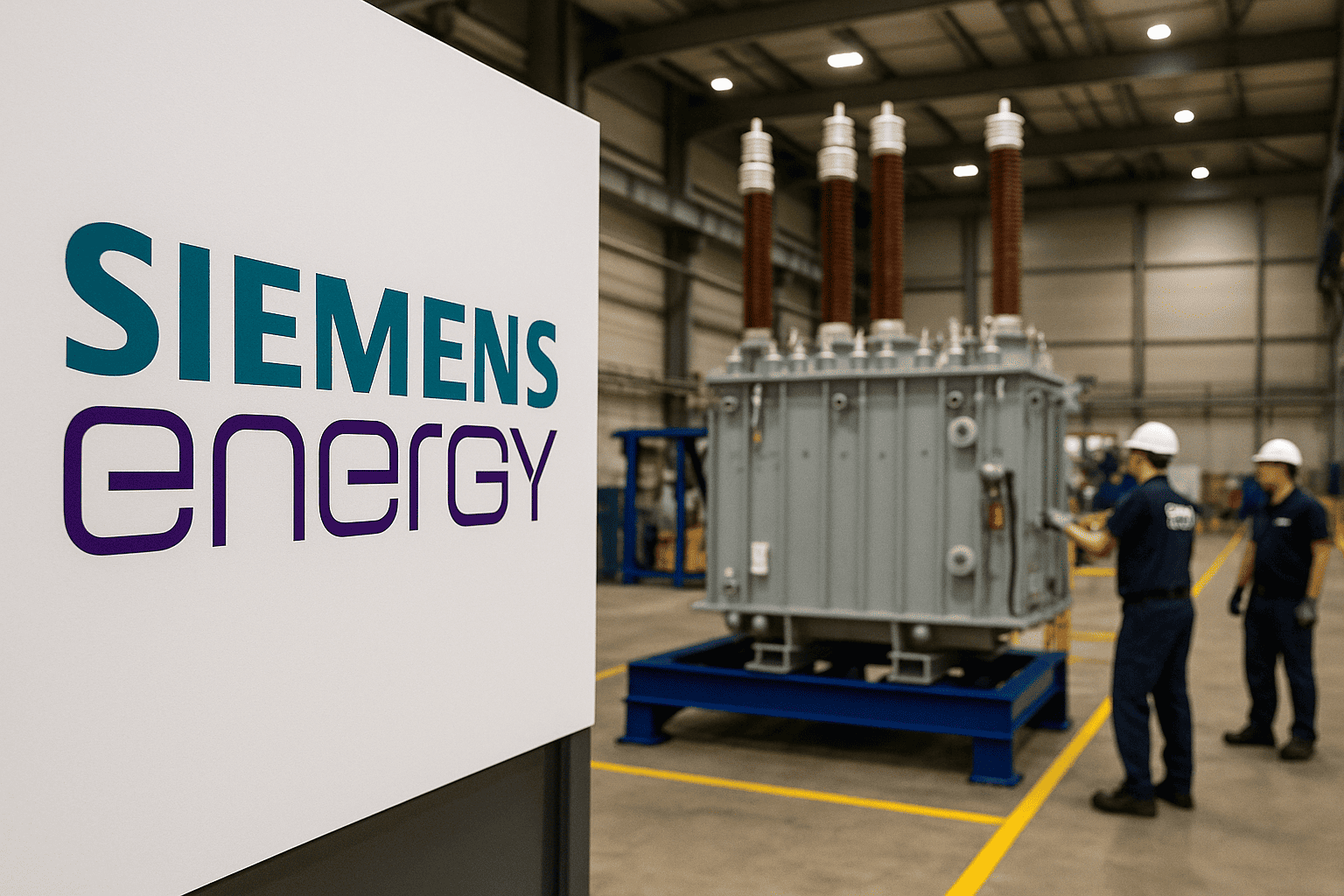Siemens Energy to Invest €2.3B in Transformer Plants
By Tredu.com • 11/20/2025
Tredu

A scaled answer to a global bottleneck
Siemens Energy to invest €2.3B in transformer plants, a move designed to reduce long queues for high-voltage equipment that utilities, renewable developers, and data center operators now face. The company says capacity additions will focus on large power units and high-rating distribution transformers, supported by more coil-winding lines, larger test pits, and upgraded insulation and drying systems. By publishing a single number that anchors its intent, Siemens Energy signals to the market that production slots will expand in phases and that long-lead items are being ordered now.
Why transformers, why now
Every grid upgrade runs through a transformer. Transmission owners planning 400–765 kV links to connect wind and solar need new fleets, while distribution utilities must reinforce substations to handle EV charging and rooftop generation. Industrial users are electrifying heat and processes. AI data centers add a further layer, each campus requiring redundant high-capacity substations. In this mix, lead times for bespoke units stretched toward two years in several regions. Siemens Energy pours €2.3B into transformer plants to relieve that pressure and to protect schedules on projects that carry liquidated damages for late energization.
What the program covers
The expansion spans winding halls, core stacking, vacuum-pressure impregnation, oven capacity, and grid-code testing. Component lines for bushings, reactors, and digital monitoring kits are part of the plan, reducing dependence on third-party bottlenecks. Automation will arrive where it improves throughput and quality, for example robotic core stacking and automated oil handling. Supplier agreements for electrical steel and copper are being extended to secure grades suited to high-efficiency designs, while qualifying alternate mills to diversify risk.
Geography, policy and incentives
Capital will be spread across existing European factories and select international sites, matching skilled labor pools with demand hotspots. Locating spend near end markets shortens logistics, supports local-content rules, and limits currency swings. Public programs that fund transmission reinforcement or on-shoring of critical grid gear dovetail with the plan, making it easier to justify multi-year capacity commitments.
Pricing, margins, and contracts
Grid equipment is typically sold on indexed contracts that reference metals and, increasingly, electrical steel. With thick order books, suppliers have negotiated clauses that share cost variability and preserve delivery windows. As capacity ramps, fixed-cost absorption should improve, supporting margins even if spot pricing cools from peak tightness. Digital service attach, condition monitoring, and fleet analytics create higher-margin recurring revenue over the life of each unit.
Demand drivers in detail
Transmission owners are sequencing multi-gigawatt corridors to remote resources. Distribution utilities need more MVA at urban nodes where load growth and distributed generation collide. Energy-intensive sectors are relocating, often to grids already at capacity. Hyperscalers plan multi-region AI clusters that require resilience, redundant feeds, and fast fault clearing, which translates into multiple high-MVA transformers per campus. Each theme draws from the same foundry of skills and materials, so incremental factory slots matter.
Supply chain and materials risk
Electrical steel is the strategic input. Mills have finite capacity, and efficiency standards tighten core-loss targets. Siemens Energy is locking allocations and qualifying additional grades, while building safety stocks of long-lead auxiliaries such as tap changers and large bushings. Copper and resin remain volatile; forward cover and multi-sourcing reduce delivery risk. Logistics play a role too, since heavy units move by rail, barge, or specialized trailers that must be booked early.
Workforce, safety, and training
Transformer making is a craft industry. The plan includes apprenticeships for winding and assembly, certifications for high-voltage test teams, and incentives tied to throughput and first-pass yield. Safety in heavy lifts, oil handling, and high-energy testing remains central. Partnerships with technical institutes will widen the pool of electrical engineers and quality specialists needed to sustain higher output.
Customer impact and timelines
For transmission operators, earlier delivery lets projects slot energization dates with less buffer, reducing penalty risk. For distribution utilities, shorter lead times make it easier to relieve congestion in fast-growing load pockets. For developers of energy-intensive facilities, predictable transformer slots reduce the chance that grid interconnects delay go-live dates. The company guides to phased capacity coming online through 2026–2027, with additional shifts and lines layered as orders convert.
Competitive landscape
Rival OEMs are also adding capacity, but expansions are expensive and slow to execute. Installed base, service networks, and digital diagnostics tilt the field toward firms with scale. Siemens Energy’s program aims to defend share on delivery certainty and lifecycle support, not only on headline price. Performance specs, loss guarantees, and digital monitoring will remain key differentiators for utilities that buy on total cost of ownership.
Risks and mitigations
Three risks stand out. First, slippage in electrical-steel supply could cap effective output; longer supplier contracts and grade flexibility mitigate this. Second, skilled-labor shortages may slow ramp rates; training pipelines and retention incentives address continuity. Third, macro slowdown could stretch project starts, although regulated utility capex and public funding reduce demand volatility versus typical industrial cycles. Phased capex and flexible lines that can swing between MVA classes provide additional insurance.
Market read-through
The investment supports a clearer earnings glide path in Siemens Energy’s grid segment and adds backlog visibility for component partners, test-service firms, and electrical-steel producers. Utilities may gain scheduling leverage, yet will likely pay for certainty. For the broader energy transition, more transformer slots should smooth the cadence of connection queues, a recurring choke point for renewables and load growth. In data-center supply chains, better reliability on substation equipment aligns with rising power-access hurdles, which are now as material to project timing as compute procurement.
Bottom line
Siemens Energy to invest €2.3B in transformer plants is a capacity signal to utilities and developers that more slots are coming, with upstream components and test capability to match. By choosing to pour €2.3B into transformer plants now, the company is betting that grid reinforcement, electrification, and AI demand are durable, and that delivery certainty will be the winning currency through 2026–2027.

How to Trade Like a Pro
Unlock the secrets of professional trading with our comprehensive guide. Discover proven strategies, risk management techniques, and market insights that will help you navigate the financial markets confidently and successfully.


